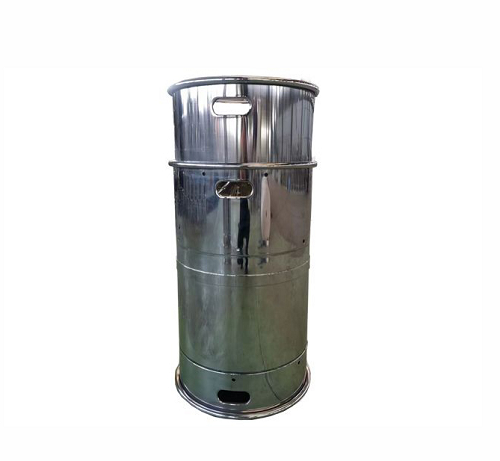Electrolyte packaging barrels are an essential link in the lithium-ion battery industry. Due to the sensitive nature of the electrolyte to moisture in the air, the electrolyte must be tightly protected in an inert atmosphere, so the electrolyte packaging barrels came into being.
The electrolyte packaging barrel is usually made of stainless steel. Because the product of the electrolyte when it meets water is extremely corrosive, it is generally selected with a relatively high corrosion resistance. The commonly used variety is SS304, and the more corrosion-resistant SS316L It is better, but because the cost rises too much, it is generally not used in China. Under normal circumstances, under the protection of high-purity nitrogen or argon, the acidity of the electrolyte is less than 50PPM, and the low time is only about 10PPM. The corrosion of the barrel wall is also minimal and will not cause serious quality problems.
However, in the production of electrolyte packaging barrels, manufacturers still electrochemically passivate the inner wall of the barrel to enhance its corrosion resistance. However, the protection ability of this protective film is limited. When the barrel is brought back for recycling after use, the inner wall is usually disassembled for cleaning, and the barrel is cleaned and derusted with oxalic acid or detergent, and even polished. In order to ensure its smoothness, this layer of protective film is often easily damaged. It is conceivable that its efficacy is difficult to fully ensure that the entire life cycle is effective. However, it is also possible to send the barrel back to the manufacturer for maintenance periodically after a certain period of time or number of cleanings.
The thickness of the wall of the electrolyte packaging barrel is generally between 1.5 and 2.5 mm, and the most typical value is about 2.0 mm. But looking back, in terms of design, the electrolyte packaging barrel itself is designed according to the idea of a non-pressure container. According to Chinese regulations, a vessel with an internal pressure exceeding 0.1 MPa is regarded as a pressure vessel, and it is extremely troublesome to declare and conduct regular inspections according to the regulations. Therefore, electrolyte packaging barrels are rarely designed and manufactured according to pressure vessels. Non-pressure vessels are also much lower in cost. Generally speaking, the filling pressure in the barrel is generally specified in the range of 0.02~0.08MPa, with 0.04~0.06MPa being the most.
